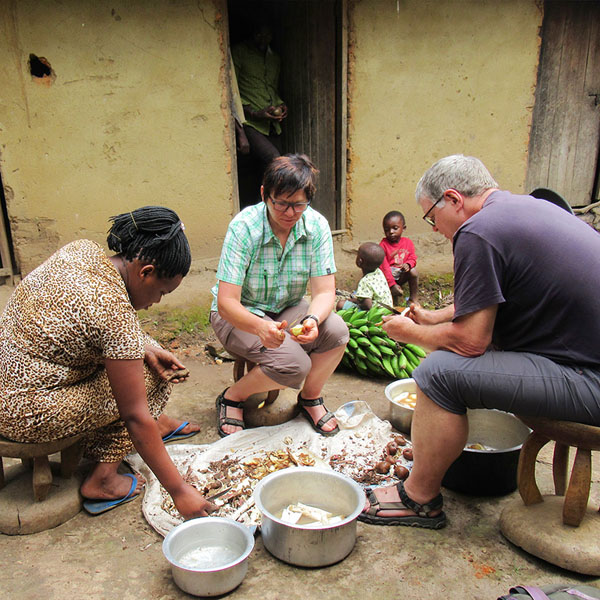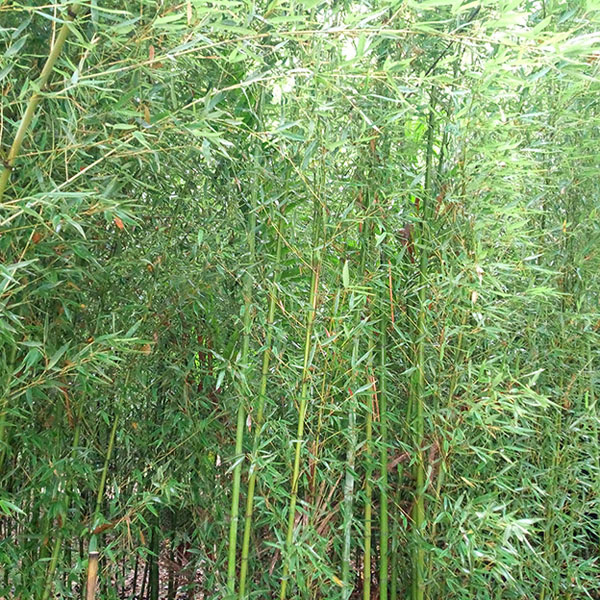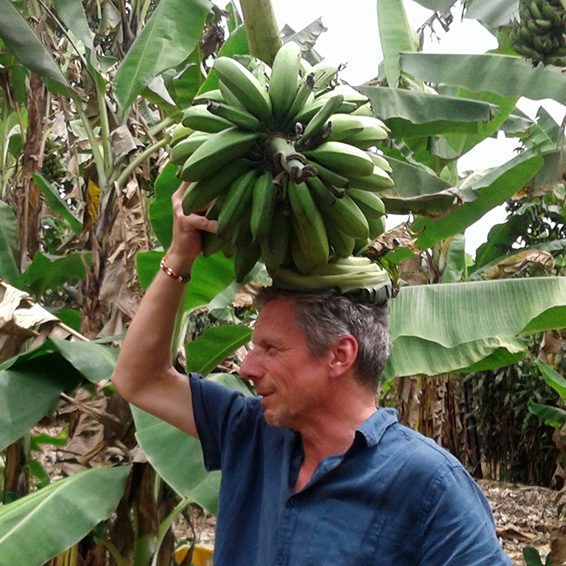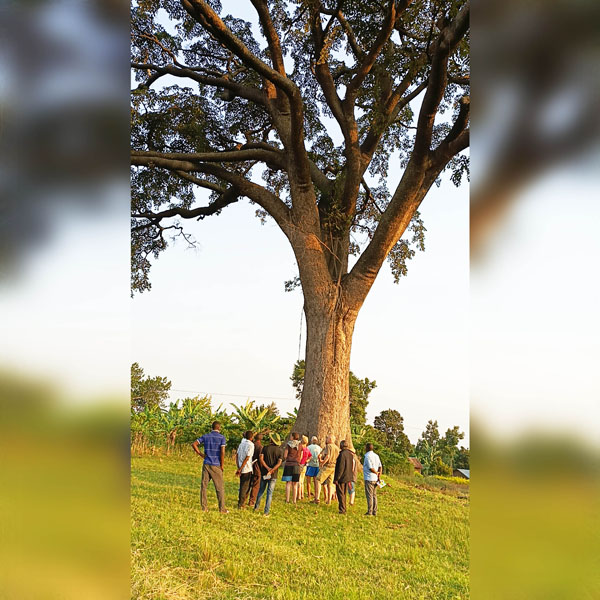Nestled in the heart of ACTREC, the Banyabutumbi Gods Sacred Tree stands as a monumental symbol of cultural and spiritual heritage. This ancient tree, with its sprawling roots and towering branches, is more than just a natural wonder—it is a sacred site that holds deep meaning for the local communities. Revered as a dwelling place of the gods, the Banyabutumbi Gods Sacred Tree offers visitors a unique opportunity to delve into the rich tapestry of traditions, stories, and practices that have been woven around this site for centuries. It’s a place where history, spirituality, and nature converge, offering a profound experience that goes beyond mere sightseeing.
Immersing in Ancient Storytelling Traditions
One of the most captivating aspects of visiting the Banyabutumbi Gods Sacred Tree is the chance to immerse yourself in the ancient storytelling traditions of the local people. Long before the advent of written history, stories were the lifeblood of cultures, passed down orally from generation to generation. At this sacred site, these stories come alive as local elders share the myths and legends associated with the tree. Visitors are transported back in time as they listen to tales of gods and spirits, heroic deeds, and moral lessons that have been preserved through the ages. The stories told here are not just entertaining—they are a means of preserving the cultural identity and values of the Banyabutumbi people. Each tale is rich with symbolism, offering insights into the beliefs, fears, and aspirations of the community. As you sit beneath the ancient branches of the Banyabutumbi tree, surrounded by the whispering leaves and the echoes of the past, you’ll feel a deep connection to the cultural heritage that has been safeguarded by these stories for countless generations.
Exploring the Rich Cultural and Moral Values
The Banyabutumbi Gods Sacred Tree is not just a site of spiritual significance; it is also a repository of cultural and moral values that have shaped the lives of the local communities for centuries. Visitors to this sacred site have the unique opportunity to learn about the customs and practices that are integral to the Banyabutumbi way of life. The rituals performed at the tree, such as offerings and prayers, are deeply rooted in the community’s beliefs and serve as a means of maintaining a harmonious relationship with the spiritual world. These practices reflect a profound respect for the natural world and a recognition of the interconnectedness of all living beings. The moral values associated with the Banyabutumbi tree are also imparted to visitors through the teachings of the local elders. These values emphasize the importance of community, respect for elders, and living in harmony with nature. By participating in these rituals and learning about the cultural values they embody, visitors gain a deeper understanding of the ethical principles that guide the lives of the Banyabutumbi people. This experience is not only enlightening but also inspiring, as it encourages reflection on one’s own values and the ways in which they are expressed in daily life.
Witnessing Environmental Conservation Efforts
In addition to its cultural and spiritual significance, the Banyabutumbi Gods Sacred Tree is also a symbol of environmental conservation. The local community has long recognized the importance of preserving the natural environment that surrounds this sacred site. The tree itself, which has stood for centuries, is a testament to the community’s commitment to protecting the natural world. Visitors to the Banyabutumbi Gods Sacred Tree have the opportunity to learn about the various conservation efforts that have been undertaken to safeguard the tree and its surrounding ecosystem. These efforts include the protection of the tree from deforestation, the preservation of the surrounding flora and fauna, and the promotion of sustainable practices that ensure the long-term health of the environment. The Banyabutumbi people understand that the health of the tree is intrinsically linked to the well-being of the entire community, and they have taken steps to ensure that future generations will continue to benefit from its presence. By visiting the Banyabutumbi Gods Sacred Tree, tourists not only witness these conservation efforts firsthand but also gain a greater appreciation for the importance of environmental stewardship. This experience serves as a reminder of the vital role that each individual plays in protecting the natural world and preserving it for future generations.
Participating in Spiritual Rituals and Practices
One of the most profound experiences a visitor can have at the Banyabutumbi Gods Sacred Tree is the opportunity to participate in the spiritual rituals and practices that are performed at this sacred site. The tree is considered a dwelling place of the gods, and the rituals conducted here are believed to facilitate communication with the divine. Visitors are often invited to join in these rituals, which may include offerings of food, flowers, or other items that are symbolic of gratitude and reverence. The act of participating in these rituals allows visitors to connect with the spiritual beliefs of the Banyabutumbi people on a deeper level. It is an opportunity to step outside of one’s own cultural framework and engage with a different way of understanding the world. The rituals also serve as a form of meditation, offering a moment of introspection and connection with the natural world. As you stand before the Banyabutumbi tree, offering your own prayers or simply observing the rituals being performed, you’ll feel a sense of peace and tranquility that comes from being in the presence of something much greater than yourself. This spiritual experience is one that stays with visitors long after they leave the site, leaving them with a renewed sense of purpose and a deeper understanding of the interconnectedness of all life.
Gaining Insight into Local Art and Craftsmanship
The Banyabutumbi Gods Sacred Tree is also a hub of local art and craftsmanship, offering visitors a chance to explore the creative expressions of the Banyabutumbi people. The tree and its surrounding area have inspired countless works of art, from intricate carvings to elaborate textiles, each reflecting the deep spiritual and cultural significance of the site. Visitors can explore local markets or workshops where artisans create these beautiful pieces, often using materials sourced from the natural environment. The craftsmanship on display is not only a testament to the skill and creativity of the Banyabutumbi people but also a reflection of their deep connection to the land and their respect for the resources it provides. By purchasing these handmade items, visitors support the local economy and help preserve these traditional arts for future generations. The art and craftsmanship associated with the Banyabutumbi Gods Sacred Tree are more than just souvenirs—they are tangible representations of a culture that has endured for centuries, offering a unique way to bring a piece of this sacred place home with you.
Conclusion
A visit to the Banyabutumbi Gods Sacred Tree is much more than a sightseeing trip—it is a journey into the heart of a culture rich in tradition, spirituality, and respect for the natural world. Whether you’re engaging with the ancient stories, participating in spiritual rituals, or learning about the environmental conservation efforts that protect this sacred site, the experience is both enlightening and transformative. The Banyabutumbi Gods Sacred Tree stands as a symbol of the enduring connection between people, nature, and the divine, offering visitors a rare opportunity to explore the cultural and spiritual heritage of the Banyabutumbi people in a deeply meaningful way. As you leave this sacred site, you’ll carry with you not only memories of the majestic tree but also a renewed appreciation for the values of community, respect, and environmental stewardship that it represents. This is a destination that speaks to the soul, leaving an indelible mark on all who visit, and inspiring a deeper connection with the world around us.









